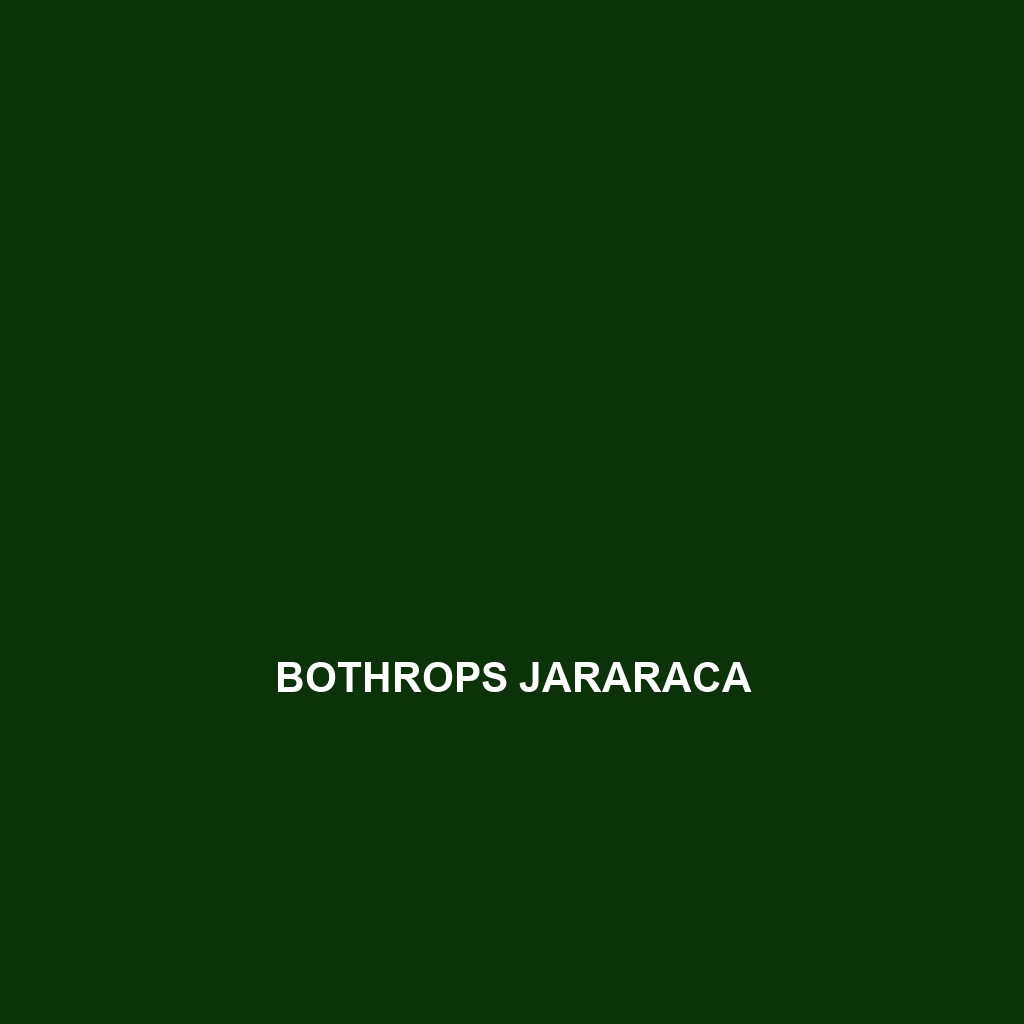Common Name: Bothrops jararaca
Scientific Name: Bothrops jararaca
Habitat:
Bothrops jararaca, commonly known as the jararaca pit viper, is predominantly found in the tropical forests of Brazil, Argentina, Paraguay, and Uruguay. This species thrives in varied habitats including humid rainforests, dry forests, and scrublands. Favoring environments with dense vegetation and proximity to water sources, Bothrops jararaca is often encountered in underbrush and leaf litter, where it can easily ambush prey.
Physical Characteristics:
Typically, Bothrops jararaca measures between 1 to 1.5 meters in length, though some individuals can grow larger. The coloration ranges from brown to olive-green, adorned with distinctive dark brown or black zigzag patterns along its dorsal side, aiding in camouflage. The species features a triangular head, prominent fangs, and vertical slit-like pupils which are characteristic of many pit vipers. Its robust body and compressed tail facilitate both climbing and ambush predation.
Behavior:
Bothrops jararaca is primarily nocturnal, exhibiting a behavior pattern of hunting and foraging at night. During the day, it often remains concealed within foliage or burrows, minimizing detection by predators and prey alike. This species is known for its ambush tactics, wherein it patiently waits for unsuspecting prey to come within striking distance. Additionally, it showcases defensive behaviors such as coiling and hissing when threatened.
Diet:
The diet of Bothrops jararaca mainly consists of small mammals, birds, and amphibians. Its role as a predator is vital, as it helps to control the populations of these animals within its habitat. Bothrops jararaca employs a unique feeding strategy, using its heat-sensing pits to detect warm-blooded prey even in low light conditions, making it an effective nocturnal hunter.
Reproduction:
Reproductive activities for Bothrops jararaca generally occur in the warmer months, with females giving birth to live young in litters ranging from 5 to 30 offspring. Unlike many other snake species, jararacas exhibit ovoviviparity, where eggs develop within the female’s body until they hatch. Maternal care is minimal, but the young are fully independent upon birth and exhibit similar hunting behaviors as adults.
Conservation Status:
The conservation status of Bothrops jararaca is currently classified as Least Concern according to the IUCN Red List. However, habitat destruction due to urbanization and agriculture poses a significant threat to its populations. Continued monitoring is essential to ensure this species maintains a stable presence in its native habitats.
Interesting Facts:
Bothrops jararaca is infamous for its potent venom, which is primarily hemotoxic, affecting the blood and tissue of its victims. Despite its fearsome reputation, this snake plays a crucial role in its environment and contributes to the biodiversity of its ecosystem. Additionally, jararacas are often studied for their unique physiological traits, which may hold medical potential.
Role in Ecosystem:
As an apex predator, Bothrops jararaca plays an essential role in maintaining the ecological balance. By preying on various small mammals and birds, it helps control their populations, thus preventing overgrazing and the resultant damage to vegetation. Furthermore, its role in the food web supports other species, showcasing the interconnected nature of the ecosystem where it resides.
